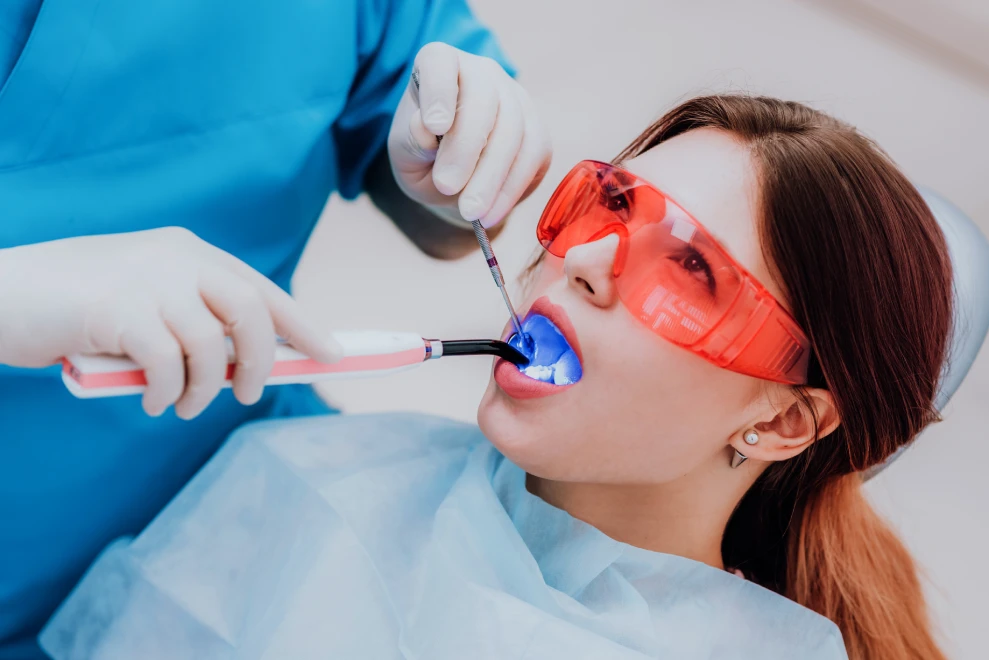Orthognathic surgery

What is it?
Orthognathic surgery is corrective jaw surgery that repositions the maxilla (upper jaw), mandible (lower jaw), and/or chin to achieve proper alignment of the teeth, facial structures, and airway. It is usually combined with orthodontic treatment, as braces alone cannot correct severe skeletal discrepancies (skeletal malocclusion).
Common surgical procedures include:
• Le Fort I Osteotomy – repositioning of the upper jaw.
• Bilateral Sagittal Split Osteotomy (BSSO) – repositioning of the lower jaw.
• Segmental Osteotomy – correction of smaller sections of the jaw for bite alignment.
• Genioplasty – reshaping or advancing the chin for balance and harmony.
Orthognathic surgery not only improves chewing, speech, and airway function but also enhances overall facial aesthetics, balance, and confidence.

Our Methods
At our Dental & Maxillofacial Center, we follow a multidisciplinary and precision-driven approach with the highest standards of safety.
- 3D CBCT + Digital Impressions + Facial Scanning – comprehensive evaluation of bone, teeth, and facial profile.
- Virtual Surgical Planning (VSP) – 3D simulations to predict skeletal movement, facial changes, and airway improvement.
- CAD/CAM Splints & Cutting Guides – custom-designed guides for surgery, ensuring accuracy and efficiency.
- Rigid Fixation Systems – titanium plates and screws provide stability and reduce relapse.
- Airway-Centered Assessment – especially important in patients with obstructive sleep apnea (OSA).
- Multidisciplinary Team Care – collaboration between maxillofacial surgeons, orthodontists, anesthesiologists, nutritionists, and jaw physiotherapists.
- Enhanced Recovery After Surgery (ERAS) & Nerve-Safe Techniques – minimize swelling, accelerate recovery, and protect sensory nerves of the lips and chin.
Treatment Timeline (transparent process): - Pre-surgical orthodontics – 6–18 months (depending on the case).
- Surgery in hospital – usually with a 1–3 night stay.
- Post-surgical orthodontics – 6–12 months to refine occlusion.
- Long-term follow-up – to ensure stability and optimal results.


When should you do it?
Orthognathic surgery is typically recommended when jaw discrepancies cause significant functional or aesthetic problems.
Common indications include:
- Skeletal Class II / III malocclusion – upper jaw too prominent, or lower jaw too protruded or retruded.
- Open Bite / Deep Bite / Crossbite – caused by skeletal, not dental, issues.
- Facial Asymmetry – noticeable imbalance or chin deviation.
- Jaw Deformities – from birth defects (e.g., cleft lip/palate) or trauma.
- Obstructive Sleep Apnea (OSA) – due to retruded jaws; Maxillomandibular Advancement (MMA) is often recommended.
- Functional Problems – difficulty chewing, unclear speech, or temporomandibular joint (TMJ) imbalance.
- When orthodontics alone is not enough – jaw surgery is the only option to correct skeletal foundation.
Note: Surgery is usually performed once growth is complete (approximately ≥16 years for females, ≥18 years for males), though individual assessment is essential.
Orthognathic surgery provides both functional and aesthetic improvements with long-lasting results

Restores effective chewing and speech, reducing strain on teeth and gums.

Balances facial proportions, harmonizing jawline, lips, and chin.

Improves airway and breathing, especially in OSA patients.

Long-term stability when combined with orthodontics and digital planning.

Enhances quality of life through improved function, comfort, and confidence.
Conditions commonly managed with orthognathic surgery include






maxillary deficiency, mandibular prognathism, or retrognathia.
including hemimandibular hyperplasia or hypoplasia.
after accidents or injuries.
secondary deformities after cleft lip/palate treatment.
caused by skeletal airway restriction.









Chat with us
Call Us